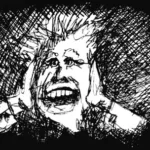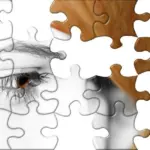He Schizoaffective disorder It is a controversial disorder on a theoretical level, but a clinical reality that affects 0.3% of the population. Knowing its symptoms, effects and characteristics that can explain its causes is to know this diagnostic category.
What is Schizoaffective Disorder?
Broadly speaking, we can understand Schizoaffective Disorder as a mental disorder that combines psychotic symptoms (delusions, hallucinations, disorganized speech, very disorganized behavior or negative symptoms such as diminished emotional expression or avolition) and mood disorders (mania). -depression).
Thus, Schizoaffective Disorder fundamentally affects perception and emotional psychological processes.
Symptoms and diagnosis of Schizoaffective Disorder
Schizoaffective Disorder is usually diagnosed during the period of psychotic illness due to the dramatic nature of its symptoms. Episodes of depression or mania are present for most of the duration of the illness.
Due to the wide variety of psychiatric and medical conditions that can be associated with psychotic symptoms and mood symptoms, Schizoaffective Disorder can often be confused with other disorders, such as bipolar disorder with psychotic characteristics. , major depressive disorder with psychotic features… In a way, the boundaries of this diagnostic category are unclear and this is what causes a debate about whether it is an independent clinical entity or the coexistence of several disorders.
To distinguish it from other disorders (such as bipolar), psychotic features, delusions, or hallucinations must be present for at least 2 weeks in the absence of a major mood episode (depressive or manic). Thus, the criterion used to distinguish between Schizoaffective Disorder and other types of mental disorders is, fundamentally, time (duration, frequency of appearance of symptoms, etc.).
The difficulty in diagnosing this disorder lies in knowing whether the mood symptoms have been present during the majority of the total active and residual duration of the illness, determining when there were significant mood symptoms accompanied by psychotic symptomatology. To know these data, the health professional must exhaustively know the subject’s medical history.
Who suffers from this type of psychopathology?
The prevalence of Schizoaffective Disorder in the population is 0.3%. It is estimated that Its frequency is one third of the population affected by schizophrenia.
Its incidence is higher in the female population. This is fundamentally due to the higher incidence of depressive-type symptoms among women compared to men, something that possibly has genetic causes but also cultural and social causes.
When does it usually start to develop?
There is consensus in stating that the age of onset of Schizoaffective Disorder usually occurs in early adult life, although this does not prevent it from occurring during adolescence or in the later stages of life.
In addition, there is a differentiated pattern of appearance depending on the age of the person who begins to experience symptoms. In young adults, bipolar-type Schizoaffective Disorder usually prevails, while in older adults, depressive-type Schizoaffective Disorder usually prevails.
How does Schizoaffective Disorder influence people who suffer from it?
The way in which Schizoaffective Disorder leaves a mark on the daily lives of those who experience it has to do with practically all areas of life. However, Some main aspects can be highlighted :
Forecast
Schizoaffective Disorder usually has a better prognosis than schizophrenia. On the contrary, his forecast usually worse than mood disorders among other things because the symptoms related to perception problems represent a very abrupt qualitative change to what would be expected in a person without this disorder, while mood alterations can be understood as a rather quantitative problem. .
In general, the improvement that occurs is understood from both a functional and neurological point of view. We can then place it in an intermediate position between the two.
The greater the prevalence of psychotic symptoms, the more chronicity of the disorder. The duration of the course of the disease also has an impact. The longer the duration, the greater the chronicity.
Treatment and psychotherapy
To date, there are no tests or biological measures that can help us diagnose Schizoaffective Disorder. There is no certainty about whether there is a neurobiological difference between Schizoaffective Disorder and schizophrenia in terms of their associated characteristics (such as their brain, structural or functional anomalies, cognitive deficits and genetic factors). Therefore, In this case, planning highly effective therapies is very difficult.
Clinical intervention, therefore, focuses on the possibility of mitigating symptoms and training patients in accepting new standards of living and managing their emotions and self-care and social behaviors.
For the pharmacological treatment of Schizoaffective Disorder, antipsychotics, antidepressants and euthymizers are usually used, while the most indicated psychotherapy for Schizoaffective Disorder would be the cognitive-behavioral type. In order to implement this last action, both pillars of the disorder must be treated.









